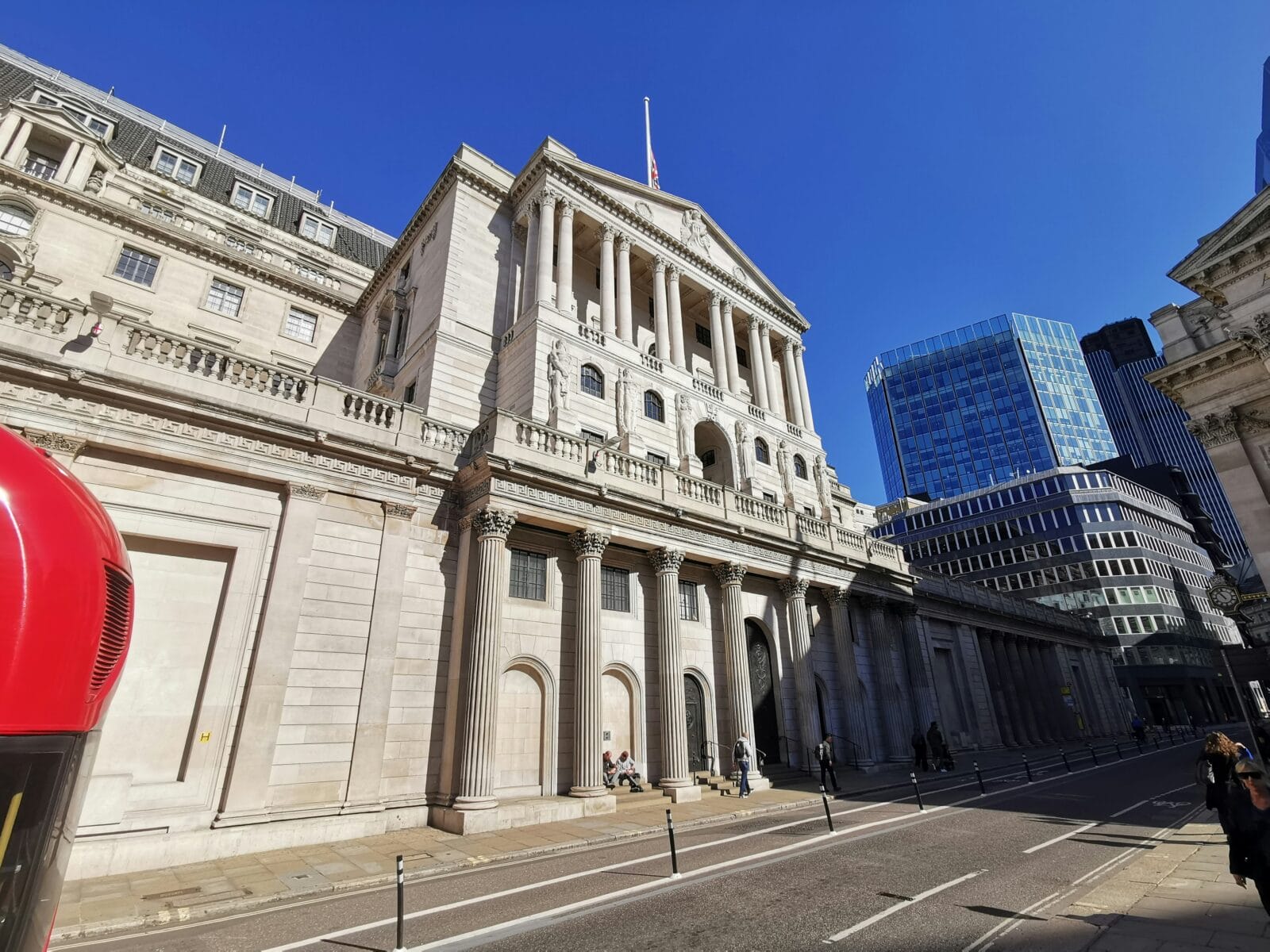Today’s announcement from the Bank of England that the MPC has decided to cut UK interest rates from 5% to 4.75% had been widely anticipated.
With UK inflation coming in below the Bank’s 2% for the September print at 1.7%, it’s clearly given the MPC enough scope to make this further cut – voting 8 to 1 in favour of cutting. The rate cutting cycle was started in August, when the Bank cut rates from 5.25% to 5%.
The OBR has said that last week’s budget is likely to lead to higher inflation and interest rates than would otherwise have been the case and so the Bank’s quarterly report – also issued today – will be watched keenly to gauge sentiment as to where they feel inflation and growth – as well as interest rates – might head in the months to come. Also later today, the US Federal Reserve will be announcing their next interest rate decision so there’s plenty for advisers and their teams to consider.
In response to today’s UK interest rate news, investment strategists and experts from across the financial services profession have been sharing their views on what it means for markets, for the economy, for advisers and for their clients’ financial planning needs as follows:
Helen Vieira, Head of Banks at Flagstone International said: “The Bank of England’s rate cut marks a pivotal shift in its monetary policy stance, signalling that policymakers believe inflationary pressures have receded enough to prioritise growth and economic stability. Following an extended period of tightening that saw the base rate peak in response to stubborn inflation, recent data indicating a return towards the 2% target may have given the MPC the confidence to pivot. This move aligns with global economic trends as major central banks weigh the risks of slowing growth against inflation control.”
“Key drivers of this decision likely include declining consumer demand, a more subdued housing market, and easing wage pressures compared to earlier in the year. However, risks persist, with geopolitical uncertainties and potential energy price shocks remaining in the background.
For those navigating cash management, a rate cut signals a potential shift towards lower deposit rates across international markets. It emphasises the need for strategic planning to secure competitive returns as monetary policy resets and the global economic cycle advances toward normalisation.”
Abhi Chatterjee, Chief Investment Strategist at Dynamic Planner said: “The Bank of England has given the economy a boost by cutting the headline rates by 25 basis points based on the prospect of slowing inflation in the near term. Though OBR in its forecasts said that the easing of fiscal measures highlighted by the Chancellor’s maiden Budget speech could be inflationary, it is not considered to be substantial enough to derail the rate cut. The concern that remains is around the impact of policies on the trajectory or the pace of future rate cuts.
“The Governor of the Bank will be keeping a keen eye on the inflation prints, as the policy decisions start to filter through. He has already made cautionary noises about services inflation, which could be a euphemism for the market not to expect rate cuts at every meeting. The metaphorical tightrope between growth and inflation remains the path the central bank has to walk, but only this time it seems to be buffeted by the winds caused by the larger than expected borrowing and spending pressures of the new Budget.”
George Lagarias, Chief Economist at Forvis Mazars said: “The Bank of England stands alone on the side of the argument that inflation isn’t beat just yet. Despite the widely anticipated rate cut, the MPC remains refreshingly pragmatic that additional borrowing from the government, geopolitics and the possibility of reigniting a global trade war are not good for inflation. The Bank’s inflation pragmatism might not be very beneficial for short term growth, but over the long run it remains Britain’s strongest line of defence against a rebound in prices.”
Paul Jenkins, Senior Partner, at McKinsey & Company: “The Bank of England’s rate cut to 4.75% offers some relief for businesses as they brace for a heavier tax burden from the Autumn Budget. With hiring costs rising and margins under pressure, businesses will be looking for ways to drive growth. This rate reduction (although marginal) could ignite a heightened commitment to ‘building’ new capabilities.
“CEOs often face a critical choice: whether to buy or build new capabilities. While M&A remains a viable route, our researchhighlights a compelling inclination toward venture building. A growth driver that has remained resilient across a range of interest rates—from pre-COVID lows near 2% to the recent highs of around 5%.
“The CEOs that deprioritised new venture building as interest rates rose post-Covid, cited capital constraints as their reason, suggesting that this lowering of interest rates could spark more corporate innovation. And, it has proven to pay off. Organisations that allocate 20% of their growth capital to new ventures achieve two percentage points higher revenue growth than those that don’t invest anything.”
Anais Caldwell-Jones, Principal in LCP’s investment team commented: “This was probably a relatively easy decision. However, events over the last week or so have certainly created future challenges for the MPC’s rate decisions. Chancellor Rachel Reeves’ budget on Wednesday last week was big, both on taxation as well as additional borrowing. And of course, Donald Trump’s decisive victory in Tuesday’s US elections has fuelled concerns that his proposed policies will lead to more inflation, both in the US and more globally.”
She added: “We’ve already seen gilt yields pick up by around 0.3% since the Chancellor’s budget. Investors using leveraged strategies – such as DB pension schemes with Liability Driven Investment strategies – may want to take a quick look at their liquidity management arrangements to make sure they’re good to go should any cash calls materialise. Such schemes though should be pretty resilient given the work done in the aftermath of the 2022 mini budget.”
Nick Henshaw, Head of Intermediary Distribution at Wesleyan, said: “We know that many advisers have already been helping clients increase their equity exposure, as cash rates fall from recent peaks. This move could only further weaken the case for cash investing.
“The ongoing challenge around a shift to equities will be balancing portfolio performance needs with any client concerns about risk and market choppiness – just last month, the FCA’s Chief Executive warned that we were entering an era of ‘predictable volatility’. On-platform smoothed funds could provide the perfect solution, helping clients benefit from the upside potential of the market, while reducing scary peaks and troughs in their investment journey.”
Shamil Gohil, portfolio manager at Fidelity International said: “As the market largely expected, the Bank of England cut its base rate by 25bps to 4.75%. Given the decreasing trajectory in domestic inflation, especially in services and wages, this is not a surprise.
“Going forward, the Monetary Policy Committee has a tough job balancing the future impact of the UK budget and government’s fiscal policy. Cost increases for companies from higher taxes, national insurance and national minimum wage will likely be at least partially passed on to consumers via price hikes next year. Fiscal stimulus should also have a positive impact on growth allaying any recessionary fears. Therefore, the sensible path continues to be for a gradual and cautious easing process as these affects are slowly realised over time.
“Looking ahead, the implications of the US election and potential for higher global tariffs may offset some of this growth and may also feed into higher inflation as the second order impact of these tariffs take hold across Europe and China, potentially muddying the waters.
“The market has priced out aggressive cuts next year post the UK budget to a more shallow cutting cycle, with the terminal rate now projected closer to 4% (previously ~3.5%).”
Giles Hutson, CEO, and co-founder of Insignis, commented: “Today’s decision to cut the base rate to 4.75% was widely expected in view of inflation dropping below the 2% target. This second rate cut reinforces the picture of growing confidence at the Bank of England in the economy making a soft landing. What is now key is the extent to which the recent budget and a series of inflationary wage settlements have boosted both growth and inflationary expectations.”
“While this is welcome news for borrowers, and savings rates still remain attractive in recent historical context, many who have benefited from higher returns in recent months will now look to longer-term fixed rates to preserve value. Cash, as an asset class, remains essential for those seeking to diversify risk while retaining flexibility and optionality – especially as individuals and advisers alike are still making sense of what Britain’s new fiscal landscape means for them and their clients.”
Lindsay James, investment strategist at Quilter Investors: “The Bank of England’s decision to cut rates by 0.25% to 4.75% aligns with market expectations, which had priced in this move with a 95% probability. This decision comes as inflation has eased, with headline inflation dropping to 1.7% in September from 2.2% in August, and core inflation falling to 3.2% from 3.6%. Despite this benign inflationary backdrop, the UK economy has experienced weak growth over the summer, and pressures on employers have increased, even as unemployment remains low.
“Interestingly, long-term bond yields have risen recently, and the market has adjusted to price in fewer rate cuts despite the economic conditions. This shift is driven by concerns over the Labour government’s additional borrowing and changes to fiscal rules, which, although sensible, are challenging to implement amid current pressures on public finances. Additionally, rising bond yields in the US, fuelled by fears that inflation will remain above target while the economy stays strong, have influenced this trend. Donald Trump’s aggressive spending plans, projected by the Congressional Budget Office to increase US debt to GDP to 143% by 2034, have further compounded these concerns.
“The divergence between the Bank of England and the Federal Reserve poses challenges. If the Bank of England cuts rates more aggressively than the Fed, it could lead to a weaker pound, which would be inflationary by raising import costs for essential items like food and energy, potentially dampening consumer spending. However, it could also boost UK exports and attract increased US interest in UK mergers and acquisitions.
“With expectations for UK rate cuts now being scaled back, and rates not expected to fall below 4% in 2025, investors would be well advised to lock in borrowing rates where possible. The influence of US monetary policy remains significant, with interest rates likely to stay higher for longer.”
Andrew Gething, managing director of MorganAsh, said: “While some may have been worried about the impact of the budget on a potential rate cut, the fall in headline inflation was clearly enough for the central bank to make its move – as widely predicted. The budget and changes to both government borrowing and the UK tax burden are more likely to impact the frequency of future decisions. There’s no question that the MPC will want to see this how this all plays out – as well as carefully watch activity abroad in the States and the Middle East, for example.
“Nonetheless, today’s news will be positive for potential buyers, as well as current borrowers – particularly those with variable or tracker mortgages. While it offers some welcome relief to the financial pressures felt by many households, it’s important to remember that we’re still not out of the woods just yet. Among positive signs, arrears data released today highlights the many households still facing real difficulty and in a potentially vulnerable situation.
“Just recently, we have seen examples of big-name firms in multiple sectors being fined for not looking after their vulnerable customers. Perhaps more alarming is that many firms that are still reporting few or even zero vulnerable customers – which just isn’t possible. Even with improving rates, it remains absolutely critical for businesses to know who their vulnerable customers are – and what outcomes they are receiving. Good data and robust processes are essential in achieving this.”
Derrick Dunne, CEO of YOU Asset Management, comments: “The MPC has decided emphatically to cut by a small amount. The move amounts to confirmation that we’re still on track for lower rates, but that caution is being taken on that path. In its notes, the MPC sees only a small effect from the UK Budget on prices, and a similarly limited downward pressure on wages caused by the hike to employer National Insurance. This is a positive signal.
“Notably lacking from its report, however, was analysis of the US Presidential election and the implications therein. Of course, the MPC met yesterday so would have been at very short notice to include any thinking around the potential inflationary implications of a new Trump Presidency. We shall wait and see what (and if) Bailey et al say at the routine press conference.
“Whether the ‘Trump trade’ – i.e. renewed dollar strength and higher import tariffs – could derail UK Government and Bank of England economic plans remains to be seen. The clear threat is a fresh bout of global inflation in the wake of a strong greenback. This will likely promote much caution from rate setters and policymakers in the months ahead.
“In the meantime, the takeaway for households and businesses at this juncture is that credit conditions are looking to ease, which is a positive. However, savers are going to be punished for leaving cash lingering at diminishing returns and should start looking in earnest to investment markets for a better long-term potential for growth. Anyone unsure about what this means for their own situation should speak with a qualified financial adviser.”















